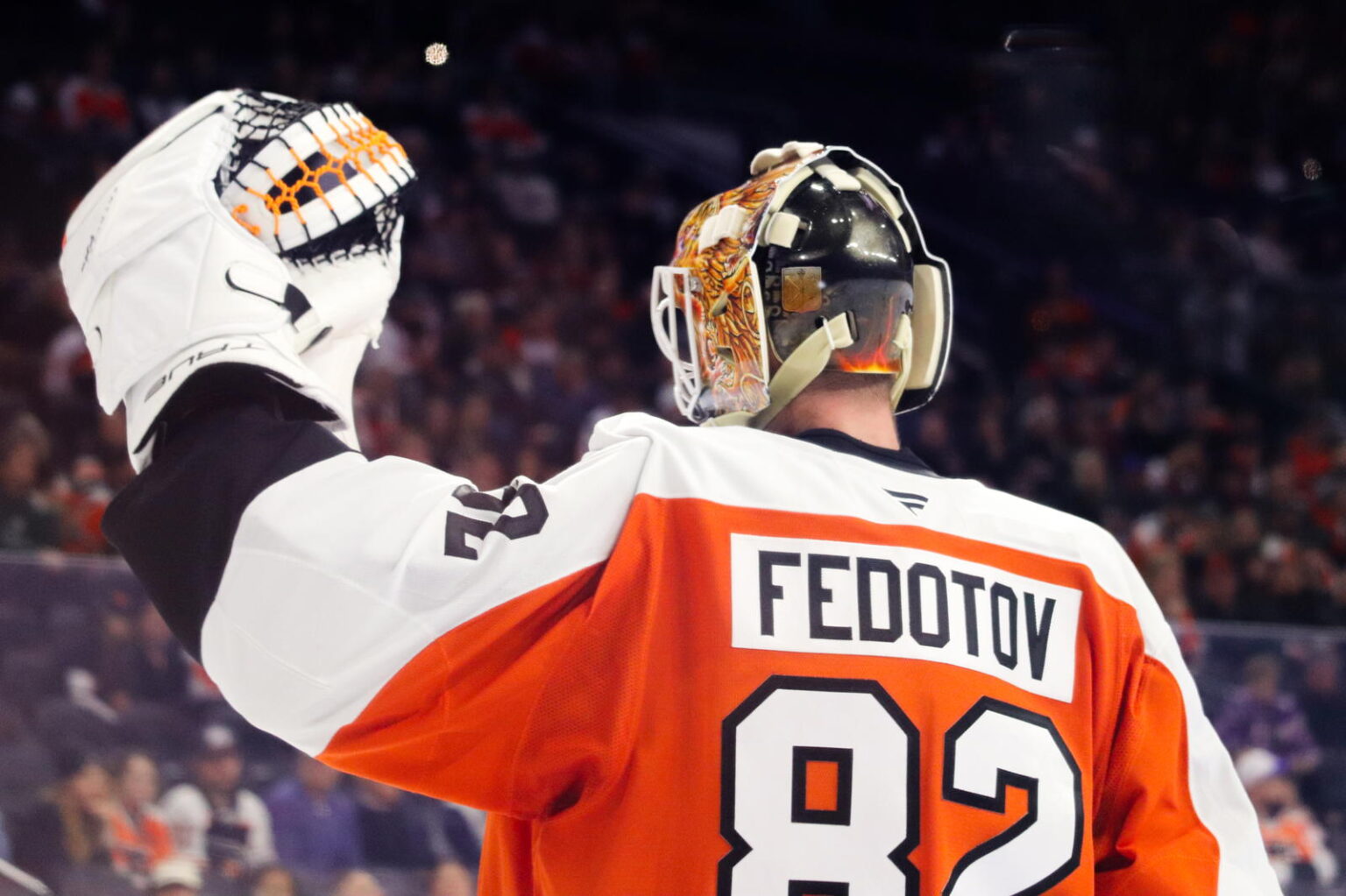The Philadelphia Flyers’ decision to trade Ivan Fedotov to the Columbus Blue Jackets for a 2026 sixth-round pick on Sunday provided clarity in a position that’s been anything but straightforward in Philadelphia.
The goaltending depth chart is now a little more streamlined, but it still leaves questions about whether the Flyers will stay committed to that structure and the players currently in it.
The NHL Tandem: Ersson and Vladar
The most likely outcome is that Sam Ersson and Dan Vladar split the crease at the NHL level. (And no, the Fedotov trade does not open up considerations for the Flyers to reunite with Carter Hart. Every credible report that has come out clearly suggests that Hart will not be signing in Philadelphia.)
Ersson, 25, already has a reputation as calm and dependable, even though his numbers have not been where he has said he wants them to be. He’s shouldered a large majority of the starter responsibilities, often while the team in front of him was inconsistent, and has not had a consistent backup to take some of that load off (whether that be because of coaching decisions or lack of available talent).
Vladar, 28, acquired from Calgary this summer, represents a different profile. At 6-foot-5, he brings size and NHL experience but also carries the need for a reset after uneven years with the Flames.
If the Flyers are disciplined, this tandem can work well. Ersson can have a more manageable workload and have space to properly evolve, while Vladar has the chance to reestablish himself without the pressure of being a true No. 1.
What cannot happen, though, is the stop-start rhythm of a three-goalie system that plagued last year. Goalies need continuity, and both Ersson and Vladar deserve the opportunity to build it.
The Wild Card: Another Three-Goalie System?
Even with Fedotov gone, it’s not out of the question that the Flyers experiment with another three-goalie setup. Injuries, waiver considerations, and management’s desire to keep as many options as possible sometimes push teams in that direction.
But if last season proved anything, it’s that such an approach comes at a cost.
Carrying three goaltenders may sound like depth, but it often results in none of them finding a rhythm. Ersson, Fedotov, and Aleksei Kolosov all experienced stretches where they sat too long between starts or were thrown into games without consistent preparation. It created uncertainty for the coaching staff and frustration for the players. If the Flyers want progress, they’ll need to avoid repeating that cycle.
The AHL Tandem: Bjarnason and Kolosov
In Lehigh Valley, the focus shifts from stability to development. Carson Bjarnason’s transition to the professional game will be closely monitored. The 20-year-old has impressed with his composure, and that mental steadiness will serve him well in the AHL. The priority for him isn’t just wins and losses but learning the pace, traffic, and grind of pro hockey.
Aleksei Kolosov enters his second year in North America with his own ambitions. Athletic and aggressive by nature, he has made it clear that he wants to be an NHL goalie, but the reality is that he still needs to refine his game to the smaller rink and faster decision-making of the AHL.
Balancing Bjarnason’s need for heavy reps with Kolosov’s ever-precarious situation will be one of the Phantoms’ biggest tasks this season.
The Outlook
Trading Fedotov simplifies the Flyers’ goaltending picture, which has too often featured clashing colors, messy brushstrokes, and drawn intense criticism from museum-goers.
Ersson and Vladar deserve to get the consistency they need at the NHL level, while Bjarnason and Kolosov gain meaningful minutes to develop in the AHL. Whether the Flyers stick to this structure or experiment with another three-goalie system will be worth watching, but for now, the organization seems to be taking steps toward a clearer framework.
It’s not a flashy setup, and it doesn’t come with guarantees. But compared to the uncertainty that has long defined Philadelphia’s crease, a season of clarity might be exactly what the Flyers need.
Read the full article here


